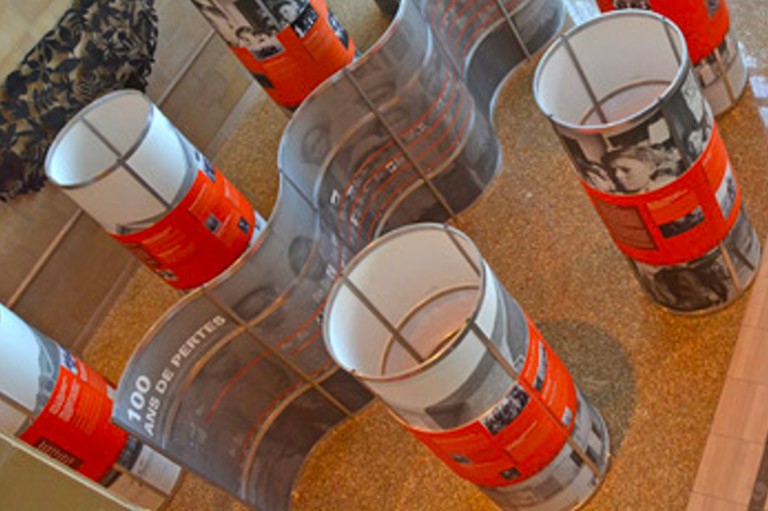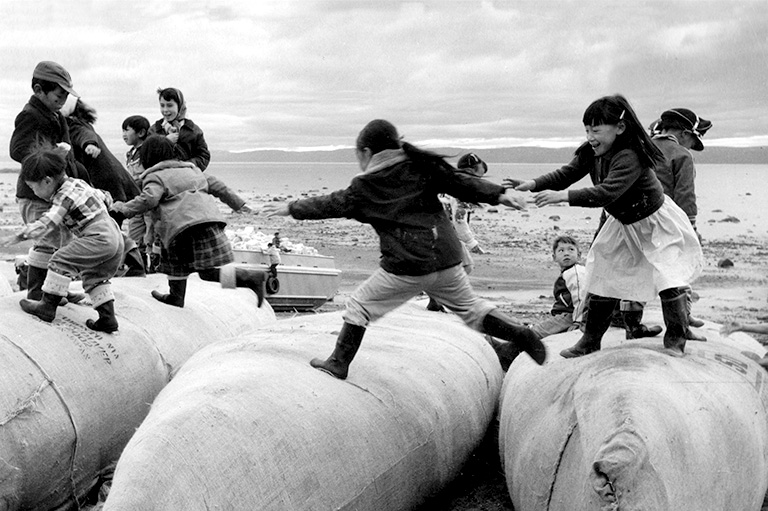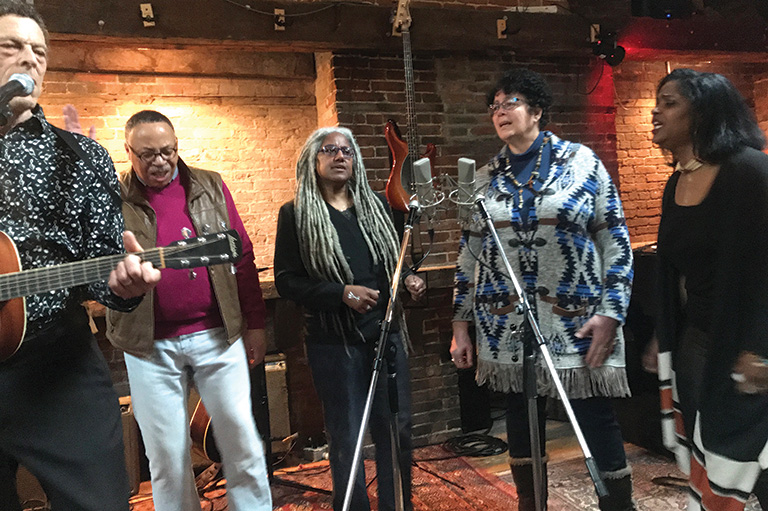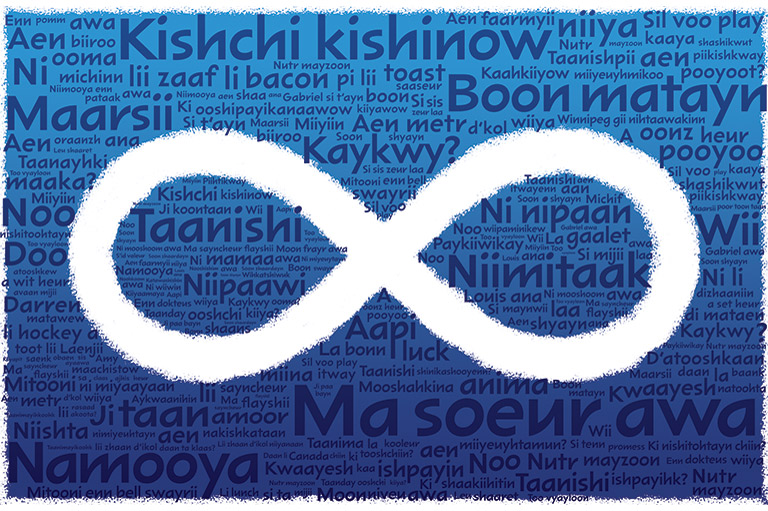100 Years of Loss: The Residential School System in Canada

The 100 Years of Loss exhibition about residential schools has been traveling across Canada since July 2011. The bilingual exhibition originates from a collection of oral histories from residential schools survivors. Organized by the Legacy of Hope Foundation, the Aboriginal Healing Foundation and Library and Archives Canada, the exhibition aims to give Canadians a history of residential schools that has long been absent from curriculum. As Kistabish explains, “this traveling exhibition is only an overview of what happened, it is not the details. This is the beginning of asking people to be aware of these stories that happened in residential schools. The most common comment we have is that it is unbelievable, nobody seems to believe that this kind system existed in Canada. We have to convince people it really happened and that we have witnesses to tell their stories.”
Because it has been difficult for teacehers to provide a comprehensive history of residential schools in Canada, the Legacy of Hope Foundation developed an educational kit to help in the classroom. “The idea of the education kit came from the comments we had from the public viewing the exhibition; they wanted to know more about what happened. The educational kit goes deeper in the way of how we’ve been treated in those schools” says Kistabish. The educational component is directed at youth aged 11-18 and provides the support for educators to effectively and compassionately teach the history of residential schools, as well as the continual influences on current and future generations.
Kistabish explains: “After a couple of years of being told to not use your language, you start to hate your language, you start to hate your culture and you start to hate your parents. We learned how to hate people, we learned how to be abusive, and we learned how to be violent because we seen it everyday. We have to get rid of this by creating awareness to remove the behavior of hate and the behavior of violence.”
Stephanie Johns, a Western University graduate student, was among those who visitied the exhibition at the Canadian Museum of History in June: “The design of the exhibition represents the cyclical nature of abuse, and poor living conditions that occurred in the residential schools and consequently continues to this day in some Aboriginal communities. The circles of the pillars represent the cycle and the wavy wall represents the ups and downs of Aboriginal and non-Aboriginal relationships throughout history.”
Themes associated with this article
Advertisement




